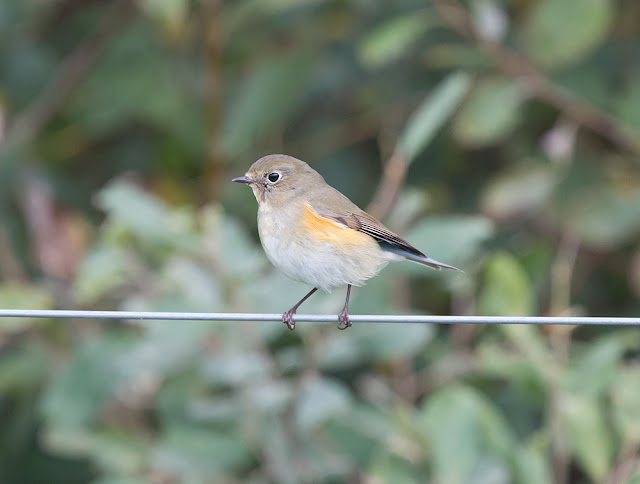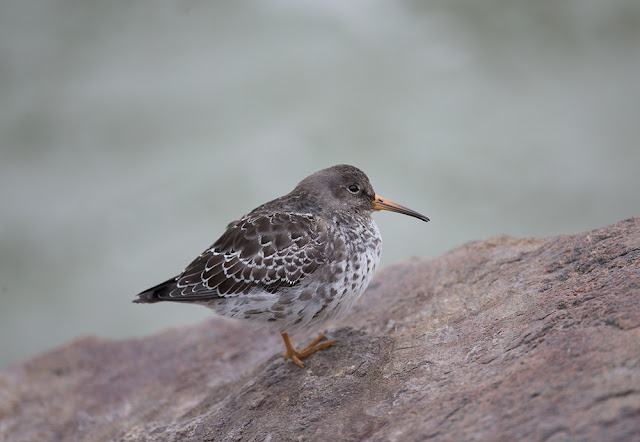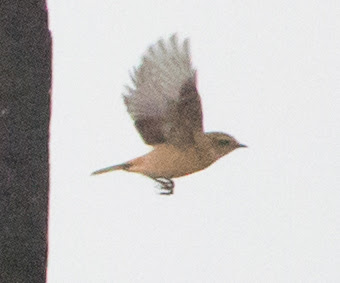So, we've reached the end of the year and its time to look back. On 31st December 2019, I was birding in the Botanic Gardens of Singapore. If you told me then that in 2020 I would need to cancel birding trips to Armenia, Cyprus and Cape Clear, that in the spring I couldn't go to the coast to look for migrants or some of my favourite spots in the Brecks to look for Redstarts, Nightingales and Cuckoos and that my birding would largely be confined to an area within 5 kilometers of home, then I'd have said that was going to be a very bad year for birding indeed!
First of all, I don't wish to downplay how bad 2020 has been for so many people. Many have had to cope with bereavement, serious illness, loneliness, depression, anxiety, financial worries and losing their jobs or businesses. I was lucky, I wasn't affected by any of that - thankfully. Forced by Covid-19 to take a different approach to birding, 2020 was a year which rejuvenated my love for and interest in birds. I had struggled for the last 5 years or so with birding. Maybe it was the over-crowded scene in the UK, the nastiness on social media and perhaps a little over-familiarity with the birds I was seeing. But, forced by a whole new set of circumstances I found new ways to enjoy my birding.
1. Local birding
Thanks to Brian Lynch, I got involved in a Whatsapp group called '5kmsfromhome'. The 5km limit came from the stricter restrictions that the Irish government placed on its citizens during the first lock-down. I started this in late March and am still going. I've reached 114 species, highlights included Common Cranes over the garden, a singing Quail on Bowthorpe Marsh, a noc-mig Ortolan Bunting and a Cuckoo heard from the garden. It got me out walking and cycling around my 5 km circle and savouring the delights of local-patch birding.
2. 'Noc-migging'
'Noc-mig' is short for Noctural Migration, thanks to Sean Ronayne for pushing me to start this up. In the first lock-down I bought a small Olympus PCM recorder and later on a Dodotronic parabola. Spring was interesting as I travelled a steep learning curve on using the recorder and using the software. I clocked some of the commoner birds like Coot and Moorhen but was delighted to also record Golden Plover and Water Rail. But, it was the autumn when it really took off. A noc-mig Ortolan Bunting on the 1st September was really exciting. Waders included Green and Common Sands, Dunlin, Lapwing and a probable Spotted Redshank. A juvenile Sandwich Tern one night was a surprise and I never realised how much Tawny Owl activity goes on around our home until now. I discovered how little I knew and now I pay far more attention to what flys over my head calling whether by day or by night. Here are some picks!
The last piece, recorded one night last October during heavy Redwing passage over the city of Norwich. I think the sound of a local football match taking place as this mass movement of birds goes on over our heads is, to me at least, very evocative.
3. The Phil More's Corner Podcast
A Whatsapp group consisting of my old pals from my Cork birding days (Harry Hussey, Brian Lynch and Sean Ronayne) evolved into The Phil More's Corner Podcast. None of us had ever done a Podcast before so we learnt as we went and it was great fun. We've done 11 episodes now, it's hard to pick a favourite out but Sean's story as he tried to record Wallcreeper in the Pyrennees still makes me chuckle out loud.
4. Project Swift
In February I ordered a 4-apartment nest box from a company called Impeckable and managed to get it up in time for arrival of the Swifts in early May. I played Swift calls from May to August. There was no interest this year but there are birding nesting in the house next door so maybe I've stirred the interest of some younger birds for the 2021 season and beyond.
5. Autumn
Finally a decent autumn. It arrived at the tail end of the first wave and ended just as infection rates started to take off again. There were plenty of drift migrants in early autumn and our day on the coast on 1st October will go down as one of the finest birding days ever - culminating in co-finding Norfolk's 2nd only Stejneger's Stonechat. A day to remember and Stonechat confirmed as Stejenger's
My week off in mid-October was meant to be on Cape Clear but Covid took care of that. Still, a Radde's Warbler, Red-flanked Bluetail and an Eastern Rufous Bushchat more than compensated.
 |
| Radde's Warbler |
 |
| Red-flanked Bluetail |
 |
| Eastern Rufous Bushchat |
6. Bird of the Year
And finally, before all of the craziness and disruption started I was able to go birding beyond Norfolk. In January 2020 I travelled to Whipsnade Zoo and saw this beauty. A male Black-throated Thrush. I said back then that it would probably be my bird of the year 2020 - and I was right. What a stunner!
 |
| Black-throated Thrush |
To all of you - thanks for reading and I wish you a Happy New Year and happier times in 2021!















































